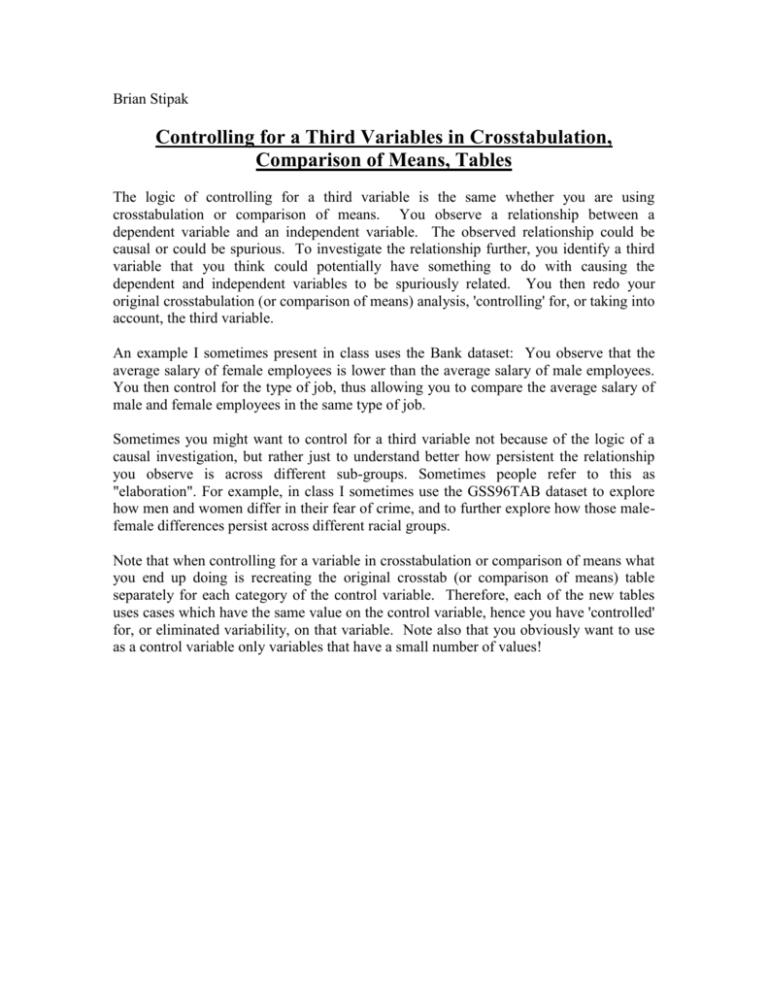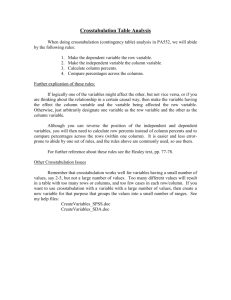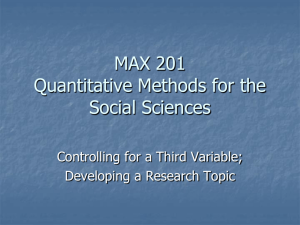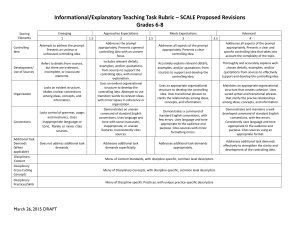Statistical Interaction
advertisement

Brian Stipak Controlling for a Third Variables in Crosstabulation, Comparison of Means, Tables The logic of controlling for a third variable is the same whether you are using crosstabulation or comparison of means. You observe a relationship between a dependent variable and an independent variable. The observed relationship could be causal or could be spurious. To investigate the relationship further, you identify a third variable that you think could potentially have something to do with causing the dependent and independent variables to be spuriously related. You then redo your original crosstabulation (or comparison of means) analysis, 'controlling' for, or taking into account, the third variable. An example I sometimes present in class uses the Bank dataset: You observe that the average salary of female employees is lower than the average salary of male employees. You then control for the type of job, thus allowing you to compare the average salary of male and female employees in the same type of job. Sometimes you might want to control for a third variable not because of the logic of a causal investigation, but rather just to understand better how persistent the relationship you observe is across different sub-groups. Sometimes people refer to this as "elaboration". For example, in class I sometimes use the GSS96TAB dataset to explore how men and women differ in their fear of crime, and to further explore how those malefemale differences persist across different racial groups. Note that when controlling for a variable in crosstabulation or comparison of means what you end up doing is recreating the original crosstab (or comparison of means) table separately for each category of the control variable. Therefore, each of the new tables uses cases which have the same value on the control variable, hence you have 'controlled' for, or eliminated variability, on that variable. Note also that you obviously want to use as a control variable only variables that have a small number of values!











